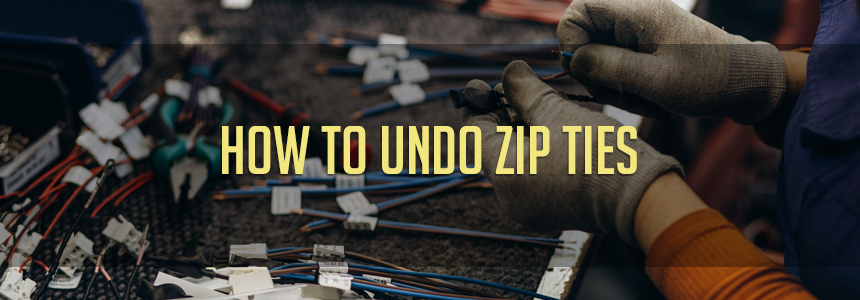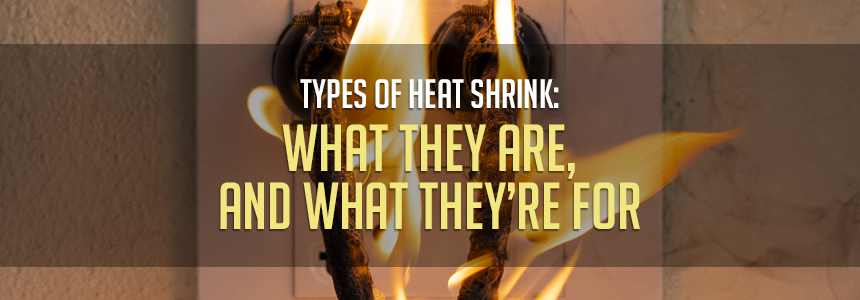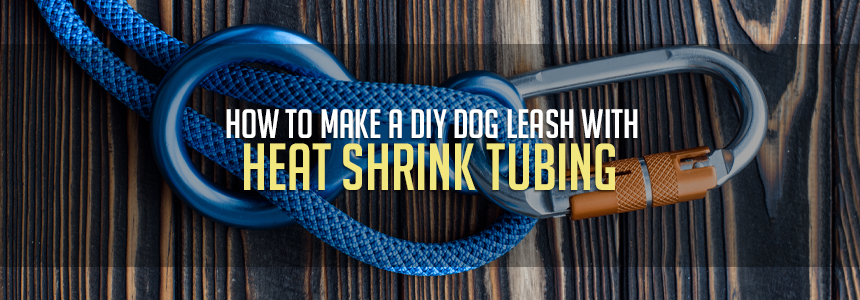How To Winterize Your Boat Before It’s Too Late

How To Winterize Your Boat Before It's Too Late
Every spring, it's the same story.
The trailer won't signal. The pump's dead. The battery's fine, but nothing works. You check fuses, jiggle wires, and curse last fall's self. You thought you had time. One more weekend, at least. But winter didn't wait.
This season, learn how to winterize a boat the right way before it's too late.
What Cold Weather Really Does to Boat Wiring
Winter isn't ever going to wait. The cold sneaks up. The moisture creeps in. Currents stop. Salt settles. Rodents get snacky.
When you own a boat, this is what you're up against. Every winter. It's why you winterize. It's why you start with the big ticket items. You fog the engine, drain the tanks, pull the battery, check the bilge, even. Cover it, of course. But wiring? That's where things slip.
A late summer heat wave or "I'll finish it next weekend" plan turns into a cold snap. And suddenly, your boat wiring is left exposed. All winter long.
If you live in Ft Lauderdale, Florida, you might find yourself with a holiday light-adorned boat cruising the canals in the Ft Lauderdale boat parade in December. Did you have time to winterize your boat before or after the parade? Because when the temps drop, your wiring is always the first cold-weather casualty.
Water expands by about 9% when it freezes. It forces into cracked insulation and loose terminals. It seeps into sleeving and stresses splices. Then one night, it's below freezing, and everything starts to split. Even the best marine-grade insulation isn't designed to flex in subzero silence.
Any temperature fluctuation is bad news for boat wire casing. But freeze-thaw cycles are the worst. Boat wiring isn't made to withstand it. Temps rise and fall. Materials expand and contract.
Insulation becomes brittle. Micro-cracks develop and grow in the cold.
Winter's extra moist air and heavy precipitation come next. And without any current flowing, there's no heat. Without heat, moisture settles. And without movement, oxidation begins. It's the age-old story of keeping wiring from oxidizing in the elements. Loose ends, cheap connectors, improperly shrunk terminals. They all invite corrosion. And your boat wiring is pretty much blown.
The only true defense? Full encasement in premium-grade sleeving that locks out vibrations, temperature swings, and moisture. Because once winter oxidation starts, spring becomes a season of rewiring, reworking, and repeatedly wondering…why didn't I just finish it in October?
Best Marine-Grade Products for Winterizing Boat Wiring
You can't fight winter with wishful thinking. Salt, slush, and freeze-thaw cycles don't care about your intentions. And the rodents are glad you're using subpar protection. If your wiring isn't securely sealed, insulated, and reinforced…it's vulnerable. (Or dinner.)
Winterizing a boat is about more than draining tanks and pulling batteries. It's about protecting what you can't see, what fails first, and what ultimately keeps your boat running. The best way to winterize a boat is to put as much time into covering your wires and connections as you do covering your boat. And that starts with using the right materials and products.
These marine-grade solutions are built to handle it all. They're what you need to survive the off-season, seal out moisture, resist cracking in the cold, and stand strong all winter long.
And if you're still Googling, "How much does it cost to winterize a boat?" just know that rewiring in April costs more.
Dual Wall Adhesive Lined Heat Shrink
Dual wall heat shrink tubing is a must-have for winterizing boat wiring. The secret is that adhesive lining. It creates watertight seals around splices, terminals, and wire tips left out in the cold. Salt spray and slush are the silent killers of off-season wiring. This is what keeps your connections sealed, your circuits clean, and your spring startup smooth.
- Quickly bonds to wire insulation (and most other substrates)
- Resistant to moisture, saltwater intrusion, and cold temps −55 °C (−67 °F)
- An excellent insulator for marine battery cables, bilge pump leads, and trailer wiring
Heat Shrink Butt Splice Connectors
These marine-grade butt-splice connectors winterproof your electrical connections. They're adhesive lined for fast, secure, and watertight splices. Just crimp, heat, and seal winter out of your boat wiring and electronics. And they come in spades, rings, hooks, male, and female-ended connectors for truly waterproof connections all winter long.
- Heat-activated adhesives bond and cure quickly
- Color-coded for easy AWG identification
- Seal and reinforce wire joins, nav light wires, pump leads, and boat trailer wiring
PET Braided Sleeving
This is a how-to winterize your boat veteran product. PET braided sleeving is flexible, expandable, and great in tight spaces. It's cold-rated to -70°C (-103°F) while bundling and organizing your marine wiring without adding bulk. And it adds a layer of protection between winter boat wires and abrasion, impacts, and hungry rodents.
- Lightweight and breathable weave doesn't trap moisture
- Expands over wide connectors and irregular shapes
- Secures helm wiring, battery banks, and under-deck runs
Stainless Steel Braided Sleeving
The toughest protection for exposed boat wiring. Metal braided sleeving deflects chewing, crushing, freezing, and even wintery sludge. It wraps your wiring in a layer of uncompromising defense that's still flexible. Just remember, it's a shield, not an insulator. So always pair with a properly jacketed wire.
- Unmatched mechanical and corrosion protection
- Survives salt, slush, snow, and vibration without breaking a strand
- Designed to shield well-insulated bilge wiring and engine compartment runs
Enclose Split Wrap
We love this stuff for winterizing a boat, but what we like even more…is that it's the key to "how to de-winterize your boat", too. Enclose split woven wrap sleeves go on fast and tool-free. No disconnections, ever. And when spring tips back around, split wrap simply slides off your wires again.
- 25% overlapping edges for full coverage
- Clean, quick, and connector-friendly
- Tidy and protect boat wiring retrofits when time or access is limited
316 Stainless Steel Cable Ties
If you're looking for marine-grade cable ties, these 316 stainless steel ties lock down your boat wiring for a long winter's nap. They're made with molybdenum, which beats salt water every time. They're built to hold strong through salt, slush, and freeze-thaw cycles. That means all winter-long, you'll have secure, rust-free bundles that are also cold-temperature rated to -112°F (-80°C).
- Self-locking, in-line heads don't loosen, stretch, or degrade
- Perfect for exposed outdoor boat wiring, battery banks, and nav lights
- Safe, secure, and rust-free in saltwater spray and slush
The 6 Most Overlooked Places When Winterizing Boat Wiring
You know you need to protect your boat wiring for winter. But do you know where things fail first? These are the zones boat owners overlook most often. And the places that spring rewiring hits hardest.
Battery Terminals: Seal Out Corrosion Before It Starts
Boat battery terminals are small, but they carry big consequences.
Moist winter air ravages exposed metal. So if your battery terminals aren't properly sealed, they're defenseless all off-season long. Damp conditions and rust buildup lead to voltage drops. And now your boat won't start, even though the battery's charged.
That's why you seal boat battery terminals with dual wall adhesive lined heat shrink and lock down all your boat wiring with stainless steel cable ties. These simple upgrades are easy to overlook and easy to fix.
Do your "why won't my boat start" next-spring-self a favor, and coldproof your power points now.
Bilge Pump Wiring: Keep It Dry and Reliable
Bilge pumps live in the lowest, wettest part of the boat to pump out naturally occurring moisture. Failure here means flood risk, and even worse in the winter, freeze damage.
Draining the bilge pump is standard boat winterization. But even after you drain it, residual moisture, condensation, and rodents threaten your boat wiring. And in the winter, that moisture becomes explosive.
Stop that before it starts by sealing every splice with adhesive lined heat shrink butt connectors and wrapping exposed runs with PET braided sleeving. These fast, protective fixes keep your bilge pump wiring sealed, secured, and springtime fine.
Trailer Connections: Protect Your Lights from Salt and Slush
And now for the outside wires. The ones that face the worst of winter's weather. They're out in the cold. On the road. Where the freezing slush, salt spray, and ice pelt relentlessly, and vibrations shake connections loose constantly. None of it lets up.
Your boat trailer wiring keeps you legal and safety-compliant. But the salty cold cracks insulation quicker than you think.
Winter road abuse is no joke. You'll never go wrong with a layer of waterproof, winterproof dual wall heat shrink on your boat trailer wires. But in a pinch, you can use split wrap for tool-free protection (and without disconnecting anything). Keep the snow and salt at bay with 316 stainless steel cable ties for strong, secure loops on your trailer wiring and exterior gear that never rusts.
Nav Lights: Insulate for Cold and Vibration
From signaling position and direction to low-light visibility, boat navigation lights are legally required.
If your nav light wiring is chewed up in winter storage, cracked from winter cold, or rusted from damp winter air, then your spring boat launch is a no-go.
That's why you seal every splice with heat shrink butt splice connectors and shield every nav light wiring run with waterproof dual wall adhesive lined heat shrink tubing.
Boat Stereo Wiring: Insulate Against Cold & Corrosion
Boat stereo wiring is thin, aftermarket, and often the weakest link in your marine electronics setup, especially in off-season storage. Narrow, unprotected wiring makes the perfect snack for hungry critters. It's also an easy victim to freeze-thaw cycles. And while bad boat stereo wiring won't halt your next season launch, it's definitely not a pleasant spring surprise.
Your first line of defense here is heat shrink butt splice connectors. They'll keep your boat speaker harness wiring secure and sealed. Plus, they reinforce, join, and block out moisture in the process. Then layer up with dual walled adhesive lined heat shrink and PET braided sleeving. The combination of waterproofing plus flexible abrasion and rodent protection will have you singing all spring.
Tarps, Covers, & Quick Fixes: Cold-Weather Versatility That Works Everywhere
Learning how to winterize a boat isn't complete without some reliable gear that works everywhere. Every boat owner has their favorites.
Ours just happen to be 3:1 heavy wall dual wall adhesive lined heat shrink tubing and 316 stainless steel cable ties. (With a shout out to the marine handiness of PET braided sleeving.) This winter, if you're grabbing a couple of extras, make it dual wall tubing and 316 ties.
They work across wiring types, storage setups, and boat cold-weather gear. They're low profile, cold-weather approved, and ruggedly durable in the snow and freeze. Lock down a tarp grommet. Reinforce a splice last minute. Bundle loose leads on the fly. And wait for spring without worries.
How I Got My Boat Winterized Fast: A 5-Minute Walkthrough
Winterizing your boat's electrical system doesn't have to be a full-day project. This quick, step-by-step walkthrough covers essential boat winterization tips for boat owners of every skill level. So even if this is your first winter, it won't be your last.
No more excuses. Just fast boat winterization fixes and flexible protection guaranteed to survive the off-season.
Here's what you do:
- Look for exposed wires and cracked insulation. Seal to waterproof with dual wall heat shrink.
- Check for loose connections. Seal tight with waterproof adhesive lined heat shrink butt connectors.
- Bundle loose wires with rodent-proof and saltwater-proof 316 stainless steel cable ties.
- Double-check winter boat tarps are securely locked down. (Psst. Stainless steel zip ties won't break, no matter how cold it gets.)
- Test your bilge pump and upgrade your water-prone wiring with dual wall adhesive lined heat shrink tubing.
- Use split wrap and stainless steel braided sleeving on any wiring you don't want to become a midnight snack.
- Take a lighter on your walkthrough. It'll seal the heat shrink tubing, and it's the only tool required. (Also, always handy to have onboard.)
That's it. This is your confident boat winterization walkthrough, in 5 minutes or less. If you're lucky, you won't have to seal a few spots. If you skip it? Come spring, you'll be lucky to start at all.
This Is Your Last Chance to Winterize Right
One cold snap. One missed splice. One last working weekend you might not get.
We can show you how to winterize your boat.
We can point to the products that deliver peace of mind.
We can tell you exactly where to use them for maximum impact.
But we can't put them on your boat before the first freeze.
That part's all on you.
You know you want to.
Whether you're cruising along in the Ft Lauderdale Christmas boat parade or just tucking your boat away safely for the off-season, now's the perfect time to winterize your boat.
Protect your investment. Avoid springtime surprises.
Winterize your boat wiring with only the best from BuyHeatShrink.com.













